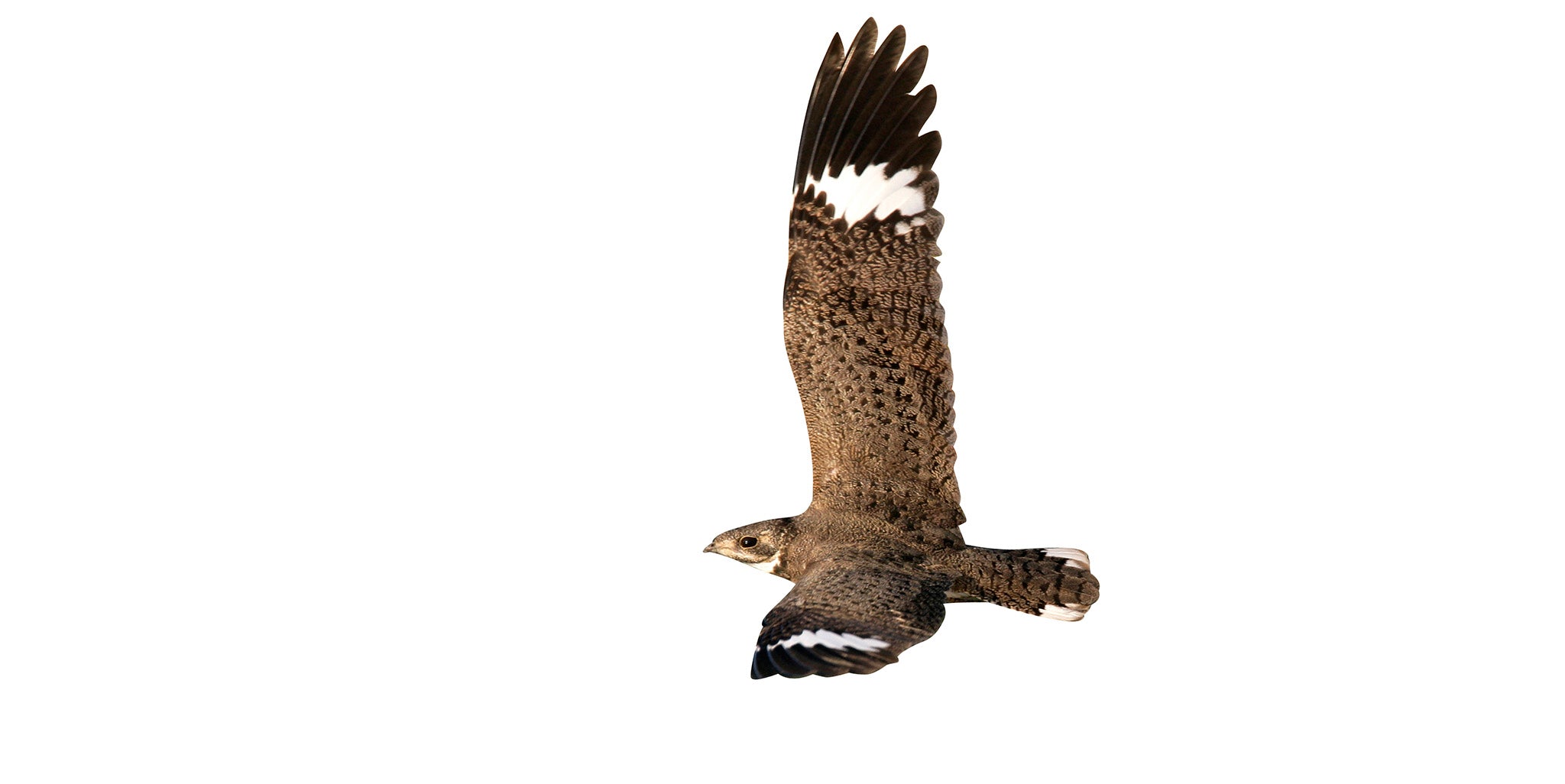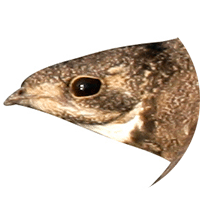Nacunda Nighthawk
The Nacunda Nighthawk (Chordeiles nacunda) Read in Spanish
Appearance: The Nacunda Nighthawk is a medium-sized bird with a distinctive appearance. It has a cryptic plumage with a mottled brown and buff coloration that helps it blend in with its surroundings. Its wings are long and pointed, enabling it to be a strong and agile flier. The bird also has large eyes and a wide beak ideal for catching insects, which form a significant part of its diet.
Habitat: The Nacunda Nighthawk inhabits a variety of open habitats such as savannas, grasslands, scrublands, and agricultural areas. It prefers areas with sparse vegetation where it can hunt for insects on the wing during dawn and dusk, which are its peak activity times.
Behavior: As a nocturnal species, the Nacunda Nighthawk is most active during the early morning and late evening hours. It is well adapted to hunting insects in flight using its excellent aerial acrobatics and keen eyesight. During the day, the birds typically rest on the ground, camouflaged among vegetation, rocks, or debris to avoid predators.
Breeding: The breeding behavior of Nacunda Nighthawks involves courtship displays by the males that include vocalizations and aerial acrobatics to attract females. The female typically lays two eggs directly on the ground, often choosing a well-camouflaged nesting spot to help protect the eggs from predators. Both parents participate in incubating the eggs and caring for the chicks after hatching.
Conservation Status: In Colombia, the conservation status of the Nacunda Nighthawk is considered to be of Least Concern according to the International Union for Conservation of Nature (IUCN).
Distribution
The Nacunda Nighthawk (Chordeiles nacunda)
Llanos Orientales: The Nacunda Nighthawk can be commonly found in the Llanos Orientales region of Colombia. This region is characterized by vast plains, grasslands, and savannas, which provide suitable habitat for the bird to forage for insects and breed.
Magdalena Valley: The Magdalena Valley in Colombia is another region where the Nacunda Nighthawk is known to occur. This area consists of lowland tropical forests, wetlands, and agricultural lands where the bird can find food and suitable nesting sites.
Eastern Andes: Parts of the Eastern Andes mountain range in Colombia also provide habitat for the Nacunda Nighthawk. This region offers a mix of open grassland areas and scrublands where the bird can hunt for insects and roost during the day.
Guajira Peninsula: The Nacunda Nighthawk is also reported to inhabit the Guajira Peninsula in Colombia, which is a semi-arid region characterized by dry scrublands and desert-like conditions. The bird's ability to adapt to different habitat types allows it to thrive in such environments.
Other Regions: While the above regions are some of the key areas where the Nacunda Nighthawk is known to occur in Colombia, the bird's distribution may extend to other suitable habitats across the country where open landscapes and sufficient prey availability are present.
Taxonomy
The Nacunda Nighthawk (Chordeiles nacunda))
- Kingdom: Animalia
- Phylum: Chordata
- Class: Aves (Birds)
- Order: Caprimulgiformes
- Family: Caprimulgidae
- Genus: Chordeiles
- Species: Chordeiles nacunda
Vocalization
The Nacunda Nighthawk (Chordeiles nacunda)
- Calls: The vocalizations of the Nacunda Nighthawk are primarily heard during the bird's courtship displays and territorial behaviors. The most characteristic call of the Nacunda Nighthawk is a monotonous and plaintive whistled note that is often repeated at regular intervals. This call is typically high-pitched, clear, and piercing, carrying well through the open landscapes where the bird is commonly found.
- Chirping and Chattering: In addition to its whistled notes, the Nacunda Nighthawk may also produce a variety of chirps, chatters, and clicking sounds as part of its vocal repertoire. These vocalizations can serve various purposes, including communication with mates, signaling territorial boundaries, and alerting to potential threats in the environment.
- Nighttime Calls: As a nocturnal species, the Nacunda Nighthawk is most active during the dawn and dusk hours when its vocalizations are more frequently heard. The bird's calls contribute to the ambient sounds of the night and are often used to attract potential mates or establish breeding territories.
- Aerial Vocalizations: The Nacunda Nighthawk is also known to vocalize while flying. During its acrobatic aerial displays, the bird may emit distinctive calls and vocalizations that accompany its flight movements. These vocalizations can be part of the courtship rituals that demonstrate the bird's agility and fitness as a potential mate.




